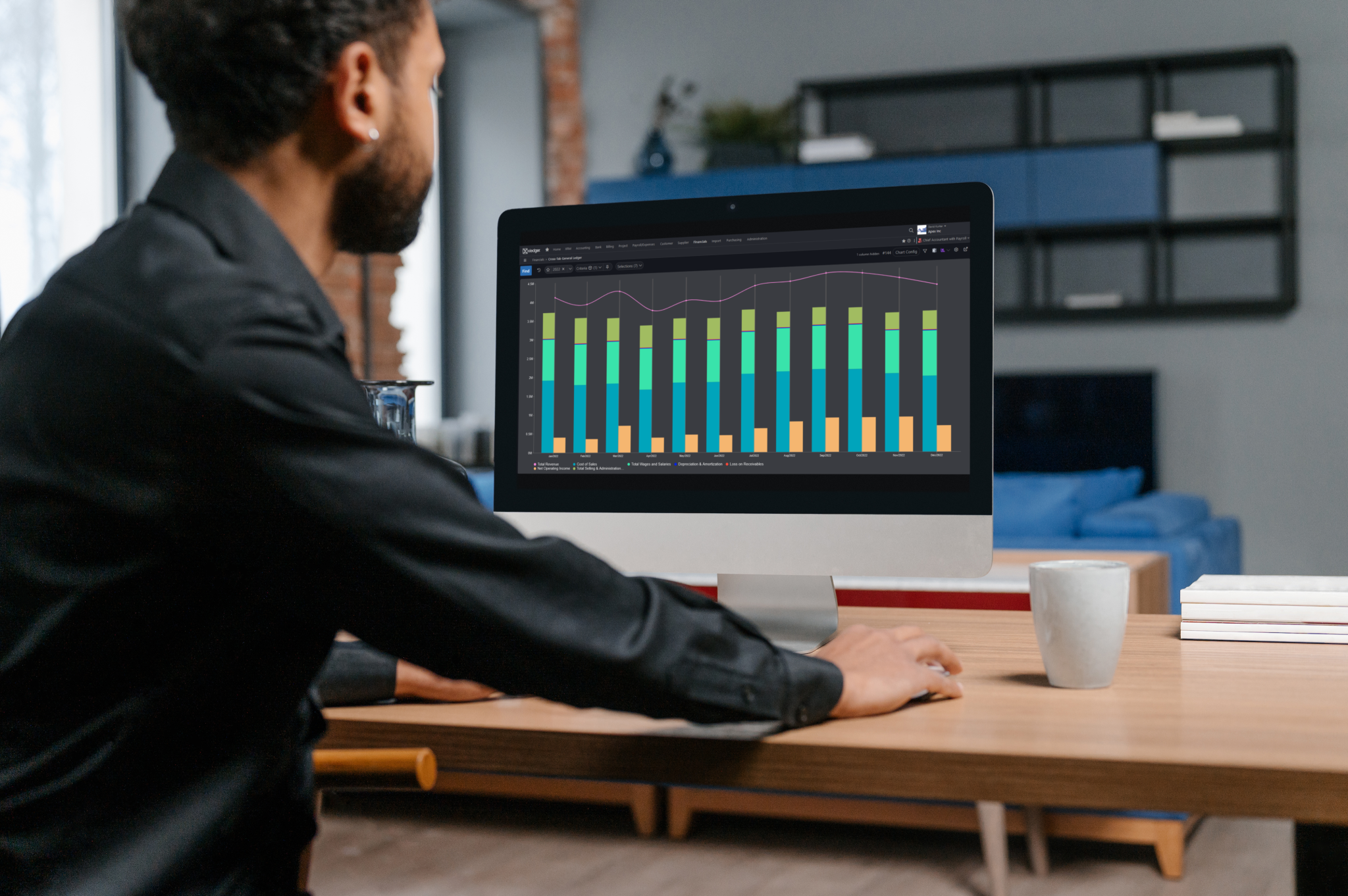Blogs
Financial Reporting: Why Excel Isn’t Cutting It

Without a flexible way to interact with data, finance teams spend much of their time manually compiling and analyzing it through Excel. However, with a powerful software tool that makes financial reporting easy, finance professionals can provide insightful reports while saving time and energy.
Difficulties with Excel’s Financial Reporting Capabilities
Excel is widely used and can accomplish much. However, it has several drawbacks that can cause issues in financial reporting.
Lack of Speed and Efficiency
Because many of the processes in Excel require formulas to be input manually, it can quickly become an inefficient program. This is especially true when dealing with large datasets or complex calculations. In these situations, creating formulas to capture necessary data takes significant time away from more important tasks.
Human Error in Formulas
Cross-referencing data is one of the main ways accountants use Excel. Unfortunately, this requires the use of many formulas such as VLOOKUP, which are prone to human error.
Mistakes in these kinds of formulas can lead to inaccurate data, which could negatively impact business decisions. An inaccurate cell reference or a failure to include all relevant cells in a range can materially change the results of the formula. Business decisions based on these results, especially in the financial realm, can negatively affect the company.
Limited Drill-Down Capabilities
While Excel allows users to filter and sort data, it has limited functionality. Working with its hierarchies and data subsets can be a clunky process, especially when dealing with sophisticated financial reporting needs.
Outdated Data
Excel can quickly become out of date when working with data that changes frequently. When situations require immediate decisions or actions, relying on outdated information from an Excel spreadsheet can result in unfavorable outcomes.
Pivot tables are an example of how easily data can become outdated. The table, often on a separate sheet from the source data, does not automatically update unless the user takes the extra step to write a macro. Therefore, even if the source sheet is updated, the pivot table may be out of date, and those who rely on it for an overview of the source data will get outdated information.
Version Control Issues
Sharing Excel files among multiple individuals can lead to unknown changes and make passing along the file akin to a game of telephone. Tracking down the most up to date version of the file can become a hassle that takes time and energy away from more productive work.
Alternative Solutions for Financial Reporting
Excel is not the only financial tool available. Other solutions automate more processes, which make financial reporting easy. ERPs are especially adept at supporting finance professionals in their work. Xledger, as a leading cloud-based ERP system, has numerous tools that make financial reporting pain-free.
One of Xledger’s insight tools is the Flex Screen, which provides users with the ability to interact with data in a multi-dimensional fashion. This functionality helps financial professionals create financial reports and analyze data to make excellent business decisions. It focuses on speed and efficiency by eliminating the need for manual formulas and extensive navigation.
Flexibility
With the Flex Screen, users can see both filtered and unfiltered data in a variety of ways: basic data tables, pivot tables with drag-and-drop capabilities, charts, and more. All this can be done with a few simple clicks.
In Excel, it can take hours to build out formulas to create the desired visuals and validate the formulas. This is where the agility of the Flex Screen comes in handy. It has pre-built views and allows users to save their customized views as a template so they can return to them with ease.
Xledger believes in empowering users to view their data in a way that best suits their individual reporting needs, so the Flex Screen helps users access their data easily and efficiently.
Efficiency
The Flex Screen eliminates the need for extensive navigation by making both summary data and detailed data accessible in one place. Users can use the simple hover-feature to drill down on their data. By hovering over the summary data, a pop-up appears that shows the detailed data, including images of source documents, such as invoices. This functionality prevents excessive navigation and reduces the time necessary to analyze report data.
Because of the Flex Screen’s interactive nature, drilling down through each layer of data to reach the right information is simple and easy.
For example, an executive at a storage unity company can use the flex screen to run an income statement to compare the budget to the actuals and learn that storage unit rental income fell short of the budgeted expectations by $400,000 in the first quarter.
With the Flex Screen, the executive could then analyze storage unit revenue by location and learn that revenue failed to meet expectations in the Denver Metro area. Finally, the executive could analyze rental unit sales by unit type to discover that rental income for units without climate control had plummeted. The executive now knows to have a discussion with managers in the Denver Metro area about climate versus non-climate controlled unit sales.
Users can find the story behind revenue discrepancies through a series of easy, intuitive actions.
Insight
With robust insight tools, financial analysis no longer needs to be a hassle. Instead of switching between tabs, trying to remember numbers, and hoping each set of numbers is up to date, users can analyze the data in one place with a few simple clicks, knowing that it is automatically updated in real time. This ability allows financial professionals to dedicate their valuable time to analyzing the data.
The purpose of financial reporting is to provide insight that can be communicated to decision makers, such as managers, executives, and board members. The Flex Screen makes it easy to find and share the story behind the numbers. Various charts, pulled up with a single mouse-click, make it easy to share reporting insights with those who do not naturally see the story in the data.
In the example of the executive who found that there was a $400,000 discrepancy between the budget and actuals, he or she was in the process of understanding the story behind the data. The final piece of the story—that non-climate controlled unit sales were plummeting—can lead the executive to report to the stakeholders the decline in revenue, present the reason for the decline, and provide a plan for how to address it.
Without the Flex Screen, the executive would be left with a vague question: why is there a $400,000 revenue shortfall? They might have eventually found the answer, but it could take hours or days to manually dig through the information available, which would leave the stakeholders in a state of uncertainty.

Best Solution for Financial Reporting
Financial reporting does not require an ERP, but working with Excel can be a cumbersome task. Automatic summaries with detailed data at users’ fingertips, like those of a good ERP, make reporting faster and simpler. Xledger optimizes its Flex Screen to meet users’ needs and empower them to gain more clarity, be more efficient, and make better decisions.

